If you’re a seller on Amazon, you need to know how to get positive reviews on Amazon. Why? Reviews are a hot topic in ecommerce for a good reason: they’re really, really important.
It’s a well-known fact that online shoppers rely on reviews when making purchasing decisions. Need a number? Trustpilot reports nine out of 10, or 89%, of consumers are reading them before buying. The vast majority will be the most heavily influenced by the number of positive ratings.
As a seller, good reviews will always earn you more sales, especially on Amazon. This insanely competitive marketplace is bursting with buyers and other sellers. So you need plenty of positive reviews to stand out, build brand credibility, and continue to drive conversions.
But what does it actually take to get more positive reviews? And where do Amazon’s review rules come into play?
This post will teach you how to get positive reviews on Amazon fast and legally without putting your account at risk.
What is Amazon’s Review Policy?
The Amazon marketplace is home to more than 250 million product reviews. These reviews, both good and bad, contain a wealth of information that consumers specifically go to Amazon to see.
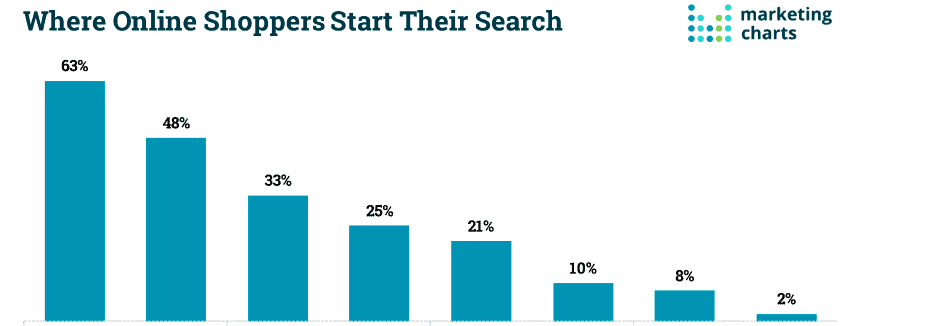
Reviews are arguably the retailer’s biggest asset, which is why it’s willing to go to such great lengths to protect their authenticity.
Amazon’s review policies set the standard of what you can and can’t do in order to keep reviews as authentic as possible. Here’s a quick breakdown.
Amazon sellers cannot:
- Incentivize reviews. Not too long ago, you could offer your product at a lower price or even for free in exchange for a review. Amazon banned this practice in 2016. Today, no type of financial reward, discount, free product, or other compensation can be provided.
- Review your product or a competitor’s. You may not post a review for something you sell or a competing product. This rule also applies to your friends, family members, and employees.
- Cherry-pick for positive reviews. Specifically asking buyers for positive reviews isn’t allowed. Neither is encouraging buyers who are “happy” or “satisfied” to leave you a review on Amazon while directing those who aren’t somewhere else.
A real-life (and non-compliant) review request found on a product insert - Ask a reviewer to change or remove a review. Buyers may elect to change or remove reviews on their own, but you can’t influence the decision by offering a refund or other compensation for doing so.
Got it? Good. Now here’s what Amazon sellers can do:
- Send a product review request to buyers. While there are additional rules for communicating with buyers, Amazon does allow you to send one feedback and/or review request per order. Messages must be sent within 30 days of order completion, include the order ID, and be translated into the buyer’s preferred language.
- Enroll in Amazon Vine to get early reviews. The Vine program invites trusted Amazon reviewers to post unbiased ratings about new products with less than 30 reviews. It recently expanded to include Brand Registry sellers.
- Use product inserts to ask for reviews. Inserting a card into your packaging or shipping box that neutrally asks for an unbiased review –complete with instructions– can help you reach customers who wouldn’t ordinarily think to leave a review or may not know how.
Amazon has a strong zero-tolerance policy toward customer review violations, so it’s important to monitor these policies for any changes.
How to Get Positive Reviews on Amazon in 5 Steps
Now that you know Amazon’s review rules, let’s look at how to get positive reviews on Amazon without breaking any of them.
Request Reviews from More Buyers
This is by far the best way to get more Amazon reviews. Yes, you can expect to receive some reviews organically, but your odds increase tenfold when you take the first step.
Amazon’s Seller Central platform allows you to individually contact Amazon buyers for reviews through templated Buyer-Seller messages or the Request a Review button. The second (and highly preferred) method sends out a combined seller feedback and product review request and is guaranteed to be compliant with Amazon policy.
If individually contacting buyers seems like a lot of work, you’re right – it is. But, it doesn’t have to be. Amazon also allows you to send feedback and review requests via third-party software applications or its Application Programmer Interface (API).
One of the most widely recognized tools in the industry is eComEngine’s FeedbackFive, which sends out automated Amazon review requests on your behalf. You can choose between custom-branded Buyer-Seller Messages or Amazon’s official Request a Review message.
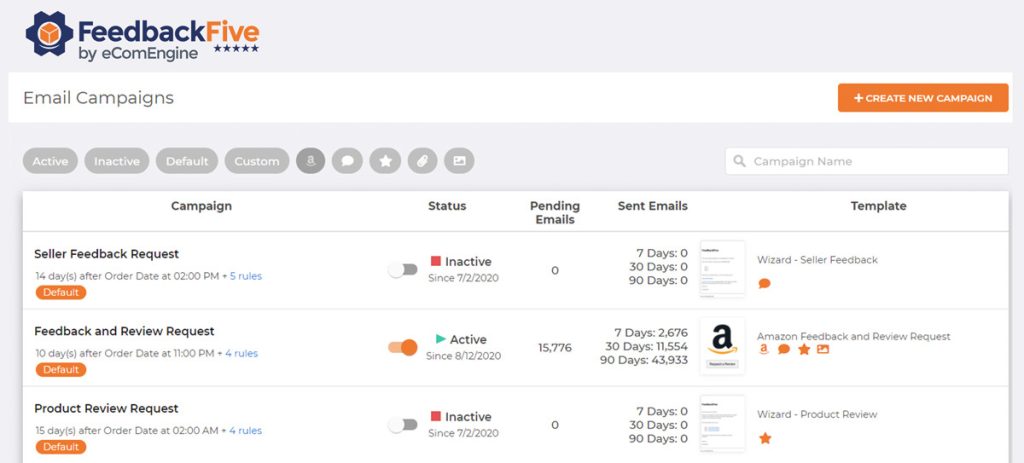
To really scale your reviews, you’ll also want to reach out to your non-Amazon buyers and ask them to leave you a review back on the marketplace. This is where your email lists, social media groups, external ads, influencer relationships, and affiliate connections will all come in handy!
Time Your Review Requests Just Right
You only have 30 days after the item is received to send an Amazon review request, so the timing is something you want to get right.
If you send the request too soon, the buyer may not be ready to write a review. But if you send the request too late, you could miss the boat entirely.
Here are some guidelines that typically yield the best results:
- Send review requests for small consumables within a few days of delivery.
- Send review requests for longer-lasting products that require additional setup or extra time for buyers to see their benefits 14-21 days after delivery.
- Send review requests for gift items purchased early in the holiday season at least a few weeks after delivery to allow for the gift to be opened.
- Send review requests for gift items purchased late in the holiday season right after the holiday (e.g. after it’s been opened and enjoyed).
Each product you sell is unique, and each buyer is too. So, it makes sense to send different product review requests for different products at different times of the year. FeedbackFive also makes it quick and easy to send a unique request for each item that you sell.
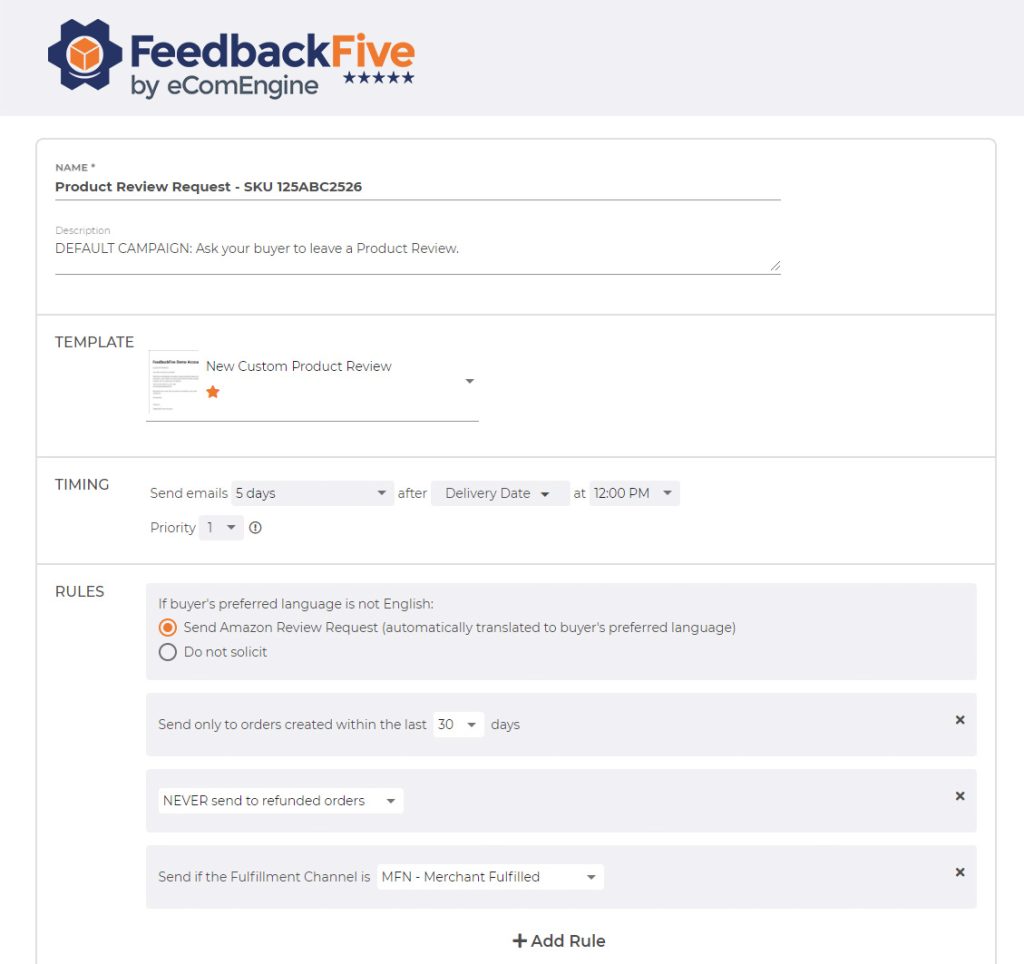
Make Your Buyers Your Biggest Fans
Let’s stop and rewind for a moment. Even before you send that perfectly timed review request, you already want your customers to be big fans of you and your brand.
It’s much easier to get positive ratings when you exceed someone’s expectations right from the start and continue to do so every step of the way thereafter.
What does this look like?
- Selling a quality product. Only a product that’s truly worthy of receiving positive reviews will go on to obtain large quantities of them. Don’t cut corners with your product quality and test everything (parts, materials, and packaging) extensively before launching.
- Providing excellent customer service. Communicate with your customers about their orders and continue to update your FAQs as needed. Make sure buyers can reach you if they need assistance and respond quickly. (If you can resolve the problem, ask for a review as soon as possible!)
- Setting up pricing promotions. A good deal will make anyone happy! Plus, when this happens, buyers often feel more compelled to leave positive reviews as a thank you. Be sure to ramp up your review requests whenever you run a coupon or set up a promotion.
- Finding ways to add extra value. It doesn’t have to be big – a small bonus item, a fun branded sticker, or even a simple handout with helpful product tips or unboxing instructions can instantly paint you in a more favorable light.
These are also great ways to get more repeat customers.
Turn Negative Reviews Into an Asset
Negative reviews don’t always have to be bad. In many ways, they can actually be a good thing.
Let me explain.
Say you launch a new product and many of the critical reviews mention a certain product feature. Maybe it’s a flimsy clasp or a faulty zipper.
Instead of bemoaning your bad luck, do something about it! By monitoring your Amazon reviews for key trends among buyers, you can keep a close eye on the performance of your products and make changes as necessary to prevent the same negative ratings in the future.
This could include:
- Editing your product listings: A common reason for poor reviews is misleading or incorrect information in your product listings. Correcting this can produce more satisfied buyers.
- Improving your existing products: Yes, it could cost you, but this is short-term pain for long-term gain.
- Changing suppliers: Negative reviews are helpful for keeping your suppliers accountable. If the problem persists, it may be time to make a change.
Negative reviews –especially those of your competitors– are also helpful for identifying new market opportunities. Buyers often leave product suggestions in their comments, so you could use them to your advantage and create a new (and highly profitable!) product line, kit, or bundle.
It’s important to address negative reviews right away. Amazon does not notify sellers when new customer reviews are published, so you’ll need to watch for them on your own.
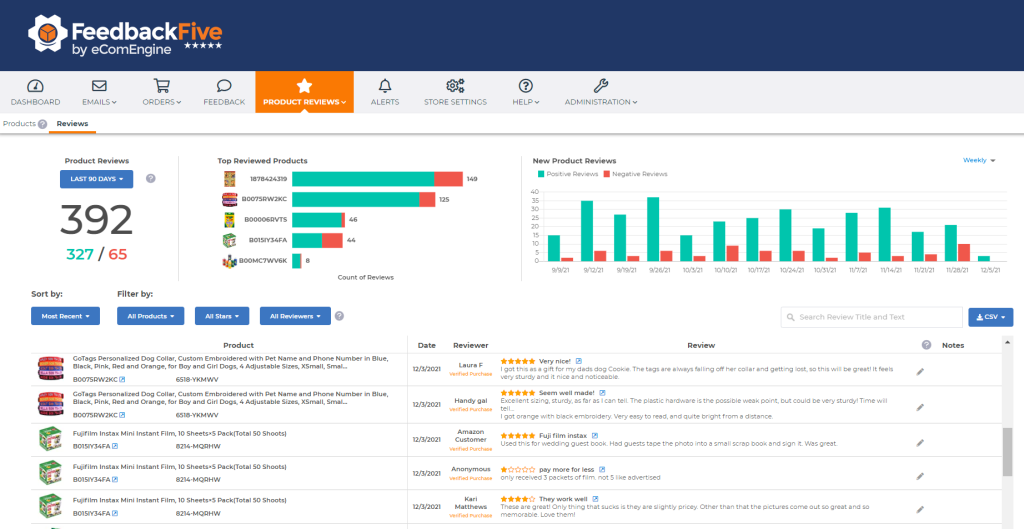
Leveraging Amazon review monitoring software like FeedbackFive can be a more efficient way to stay on top of your reviews. The tool continuously monitors all of your products and notifies you when a negative review requires your attention.
Use Amazon’s Contact Customer Feature
Prior to December 2020, Amazon sellers were able to publicly comment on their product reviews. When this feature was suddenly retired, you no longer had a direct line of communication with your buyers, most notably those who left critical reviews.
But how can you hope to resolve someone’s issue when you can’t properly communicate with them? Amazon introduced the Contact Customer feature in July 2021 as a new solution to that problem.
Available only to Brand Registry sellers, the Contact Customer link lets you send direct messages to buyers who have left critical (1-3 star) reviews with templated Buyer-Seller Messaging emails that offer a courtesy refund or additional customer support.

To use this feature, you must:
- Navigate to the Customer Reviews page on the Brands dashboard.
- Filter your reviews by star rating to see eligible 1-3 star reviews.
- Click the Contact Customer link at the top of the critical review.
- Choose your contact reason. Amazon will generate the automated email on your behalf.
The email templates cannot be customized in any way. Negative reviews must also be linked to a verified purchase.
While this new feature isn’t quite as effective as review commenting, it can help you improve the customer’s experience with your brand. Ideally, the customer will then go on to remove the review or, even better, change it to a positive one.
Does Amazon Remove Negative Reviews?
Speaking of negative reviews, here’s a question I get asked all the time: does Amazon remove negative reviews? Despite what you may read elsewhere (don’t believe all that click-bait!), Amazon will remove reviews for these reasons only:
- If the review conflicted with its Community Guidelines
- If the review was removed by the reviewer
- If multiple products were found to be incorrectly listed as the same product and require the reviews to be separated
- Unusual review behavior has been detected
- Only Amazon Verified Purchase reviews are being accepted at that time
If you suspect a review violation, you can ask Amazon to remove it through the “Report abuse” link on your product page. You can also email Amazon Seller Support at community-help@amazon.com.This can be a lot to keep up with on your own. Thankfully, you don’t have to. TraceFuse’s negative review removal service can flag questionable negative reviews that meet Amazon’s criteria for removal and file cases with Seller Support on your behalf.
The Perfect Strategy for More Positive Reviews
All of the methods mentioned here are meant to positively influence the types of reviews that your products receive without breaking Amazon protocol. You want how you ask, when you ask, and everything else you do up until that one moment in time to produce the best customer experience as possible. This is how to get positive reviews on Amazon.
It may take some trial and error to get it right, but the results will be worth it. And remember, there is plenty of help available to help streamline the process.

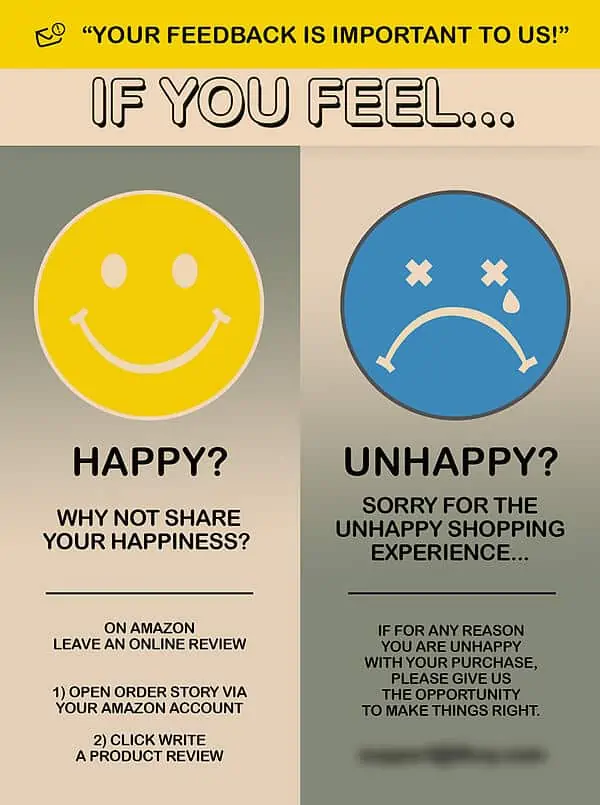


Related Articles
11 Best Ecommerce Platforms to Set Up an Online Store
Top B2B Ecommerce Platforms for 2024
How to Build an Ecommerce Website in 9 Easy Steps
11 Best Ecommerce Platforms for Small Businesses in 2024
The World’s Top Ecommerce Companies (2024 List)
25 Best Ecommerce Tools to Grow Your Business in 2024